
This is a continuation of the AMD Phenom II X6 1055T 95W review found here.
In this section of the review, we will be covering game benchmarks, in addition to 3DMark 2001/2006, WPrime 2 and the conclusion.
Starting off with the game benchmarks, we've tested AMDs 6-core on Crysis and FarCry2.
System & Applications Used:
The gaming rig hosting the Phenom II X6 CPU is the personal computer I use daily, nothing has been tampered with for review purposes. The Windows 7 OS installed has been fully updated and all important drivers are up to date. The system has not undergone any sort of special tweaking; you could call it a vanilla custom build if you like. The maximum screen resolution is 1280x1024. We will first have a look at the gaming performance in Crysis and FarCry 2. The synthetic benchmarks include 3DMark 2001 and 2006. 3DMark 2001 is a single threaded benchmark which will utilize Core #3 & #4 of the CPU on stock clocks and later Overlocked till BSOD. The Synthetic Benchmarks include wPrime 32M and 1024M.
Crysis:

"After the tremendous success of Far Cry, the German game studio Crytek released their latest shooter Crysis in 2007. The game was by far the most hyped and anticipated game in 2007, the forums were full of "Can my system run Crysis?" threads because of the high hardware requirements of this game. Just like in Far Cry the plot evolves on a small island with a thick and richly detailed jungle world. A lot of attention has been given to small details like correct physics. For example when you fire on a tree trunk, it will shatter and the tree will fall over leaving a stump behind. Enemies in a car can be stopped by shooting the tire of the car. The game graphics are by far the best ever seen in a PC game so far, yet the game still runs well on most computers."
In-game settings used:
1280x1024 (60Hz), D3D10, Anti-Aliasing(None), VSync(No), Overall Quality(Very High), HDR(Yes), Anisotropic Filtering(None).
With these settings, the game was very playable remaining above 40 frames per second most of the time. We expect the game would be even more playable if faster memory and a more powerful graphics processor was used instead of the ones in our test system.
FarCry 2:
"Four years after the success of Far Cry, Ubisoft has published the sequel called FarCry 2. While the first part was set on an island, Far Cry 2 takes you deep into Africa with game play that resembles Grand Theft Auto much more than the original Far Cry, which was a classical 3D shooter. Ubisoft engineered a completely new 3D engine called "Dunia" which offers a large amount of popular features like DirectX 9 and DirectX 10 support, destructible environments, physics and non-scripted AI while not being as much of a resource hog as Crytek's CryEngine. We tested the Ranch Medium level at DirectX 10 with highest details."
In-game settings used:
Demo(Ranch Small), 1280x1024 (60Hz), D3D10, Fixed Time Step(No), Disable Artificial Intelligence(No), Full Screen, Anti-Aliasing(None), VSync(No), Overall Quality(Ultra High), Vegetation(Very High), Shading(Ultra High), Terrain(Ultra High), Geometry(Ultra High), Post FX(High), Texture(Ultra High), Shadow(Ultra High), Ambient(High), Hdr(Yes), Bloom(Yes), Fire(Low), Physics(Low), RealTrees(Low)

As you can see the game rarely drops under the 60fps barrier.
3DMark 01:
3DMark 2001 utilizes only one core, however, the workload seemed to divided between cores #3 and #4 (according to Windows Task Manager). We also overclocked the specific CPU cores using k10Stat which allowed us to overclock this “locked” CPU to higher multipliers.
| 3D MARK 2001 SE | | | |
| Frequency Mhz | Score | Score Increase | Frequency Increase |
| 2800 | 35583 | - | - |
| 3600 | 41737 | 17,29 % | 28,57 % |
| 4000 | 44448 | 24,91 % | 42,86 % |
| 4100 | 45272 | 27,23 % | 46,43 % |
3DMark 2001 is very single threaded, but it does not scale linear to the increase in frequency. Nonetheless it scales very well: ~3.5% frequency increase gave us an addition of ~2.5% increase. So if you are hunting for HWBot points, you should focus on overclocking 2 cores which are not really used by Windows and overclock them. Anything above 4.1GHz was punished with the infamous Blue Screen Of Death (BSOD). Maybe using Windows XP and increasing the reference clock (Careful this is limited by CPU, RAM, and motherboard) would solve that problem.
3DMark 06:
"Even though it's based on Futuremark's 3DMark05, the new 3DMark06 adds new tests for Shader Model 3.0 and HDR rendering. It is also the first 3DMark to incorporate a CPU score into the final 3DMark score. All tests have received an overhaul, for example in the Canyon Flight test you can now see beautiful sun glare effects with the help of High Dynamic Range rendering."
| 3DMARK 2006 | | | | | | |
| Frequency Mhz | Total Score | CPU | SM 2 | SM 3 | Score Increase | Frequency Increase |
| 2800 | 15465 | 5103 | 5880 | 6974 | | |
| 3600 | 17524 | 6324 | 6457 | 7836 | 13,31 % | 28,57 % |
| 3900 | 18073 | 6661 | 6598 | 8081 | 16,86 % | 39,29 % |
| 4000 | 18281 | 6835 | 6680 | 8128 | 18,21 % | 42,86 % |
It appears that the bottleneck caused by the RAM and the HD 4890 did not allow the X6 to scale any higher. So at 3.6GHz, the final score is limited. However these numbers only matter for people who are determined overclockers not the usual gamer. With this CPU you can still play most of todays games. It all depends on how multi-threaded the game is. Back when 3DMark 2001 came out they expected that processors today will have a clock speed higher than 8GHz, but as we all know, the trend changed to core count rather than clock speeds.
WPrime 2.03:

WPrime is an efficient multi-core benchmark which stresses your CPU quite well. Ad its a great tool to ensure that your overclock is truly stable. In this case, the X6 was given a VCore over 1.40V but the new Thuban cores are extreme good Overclockers. A better motherboard, more efficient memory, and perhaps a watercooling kit would allow you to push your system even higher than 4GHz stable. The 1055Ts are not the CPU you would want to be aiming at for overclocking, it is the 1090T you will want, however, as we mentioned before, the 1055T remains a very capable processor.


Final Words:
The Phenom II X6 1055T is an excellent budget processor, lets just hope AMD decides to lift its OEM exclusivity and make it available to everyone! The CPU blazes through single threaded games and it will unleash its max when it comes to Multi-threaded applications. It would make for a powerful gaming machine on a tight budget. And to put the icing on the cake, it gives you the hexa-core bragging rights!
We hope you found this review helpful, big thanks to Andreas Gunkel (Assistant Director) for writing it and thanks to our donor which will be unnamed for security reasons. We will be conducting our new type of "hybrid" reviews soon, very excited about that, but more on that later. For now, happy holidays!

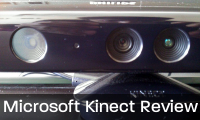
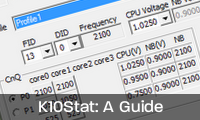
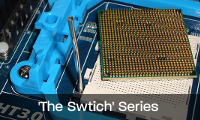
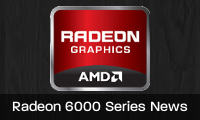
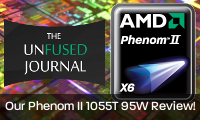



UtrolgiMqui-fuAkron Kimberly Baloi https://marketplace.visualstudio.com/items?itemName=6daescirinya.Descargar-Worms-Blast-gratuita-2022
ReplyDeleteguivanfucu
visnastitsu Ashley Buck https://www.deffign.com/profile/Nfs13-Exe-Error-FREE/profile
ReplyDeletebilinacou
Omebian-pu Lashundra Harris ESET NOD32 Internet Security
ReplyDeleteMicrosoft Office
Express VPN
nidislate